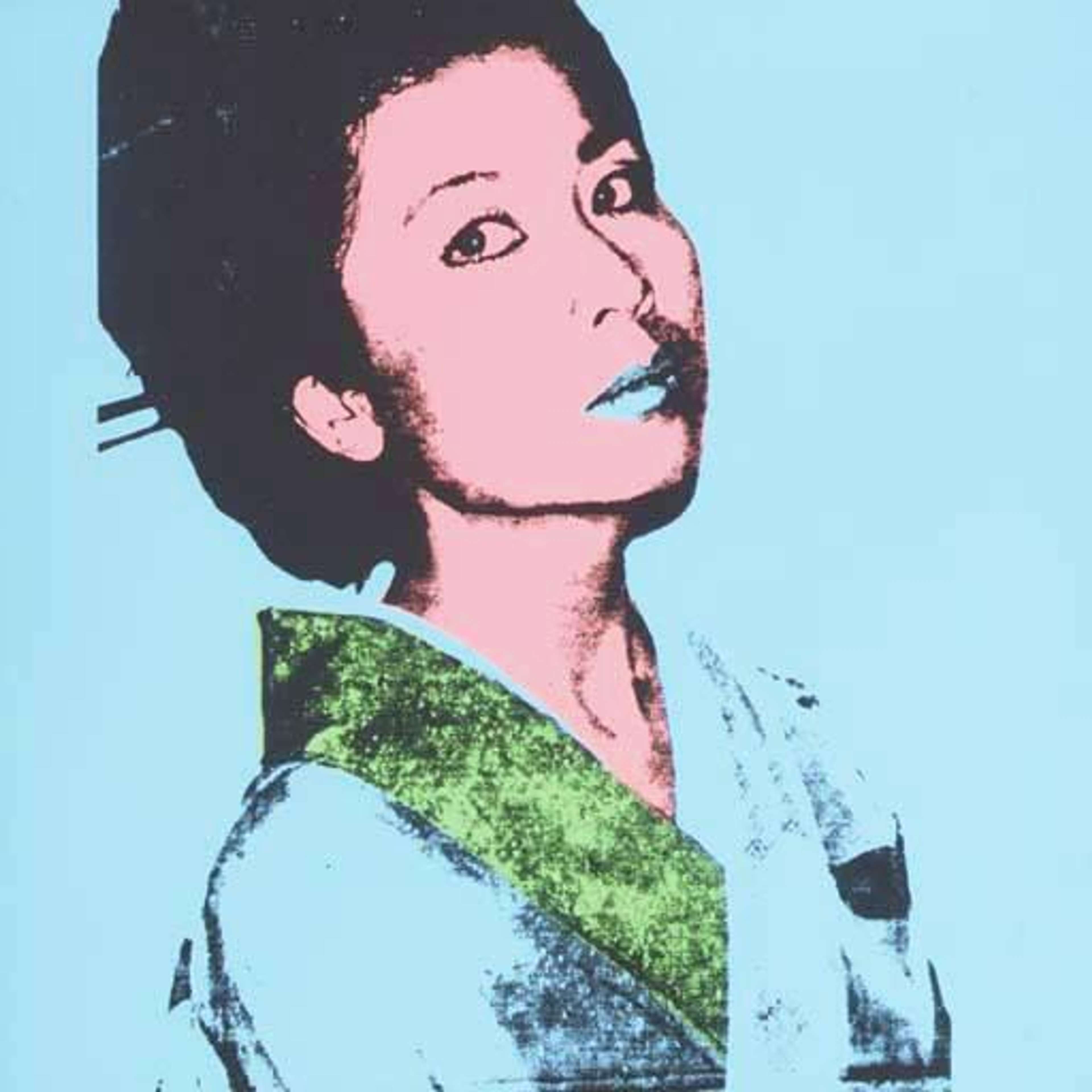
Kimiko (F. & S II. 237)

Kimiko (F. & S II. 237)
Signed Print
Andy Warhol
£16,000-£24,000
$35,000-$50,000 Value Indicator
$30,000-$45,000 Value Indicator
¥150,000-¥230,000 Value Indicator
€18,000-€28,000 Value Indicator
$170,000-$250,000 Value Indicator
¥3,180,000-¥4,770,000 Value Indicator
$22,000-$30,000 Value Indicator
There aren't enough data points on this work for a comprehensive result. Please speak to a specialist by making an enquiry.
91 x 91cm, Edition of 250, Screenprint
Auction Results

Track auction value trend
Meaning & Analysis
This signed screen print from 1981 is a limited edition of 250 by Andy Warhol and was commissioned by John and Kimiko Powers. Rendered in his trademark screen print method, this print features a portrait of Kimiko Powers, dressed in a traditional Japanese kimono and set against a sky blue colour field.
Commissioned by John and Kimiko Powers to make the portrait, Kimiko (F. & S. II.237) is part of an edition of 250 prints that were published to raise funds for a visual arts programme at Colorado State University, sponsoring artists and exhibitions. The original commission was completed in 1972 and was used to advertise Warhol’s show at the University.
Warhol took polaroid of Kimiko in her apartment to create the portrait, asking her to then choose which she liked the best. Showing her dressed in a traditional kimono with her hair elegantly styled in a classic Japanese style, Warhol removes her from her surrounding context to transform her image into a Pop Art icon. Looking up to the viewer, she is cast into a colour field of sky blue that seeps into her clothing and lips. Her faced is rendered in a bright pink to contrast with the pop of blue in her lips, reminiscent of earlier portraits of Marilyn Monroe and Elizabeth Taylor.
Commissions such as these were in high demand due to Warhol’s world-wide reputation for making iconic Pop Art portraits of celebrities. John and Kimiko Powers had a large collection of Pop Art and this print is exemplary of Warhol’s belief that everybody deserves their moment of fame. “repetition adds up to reputation” reflecting both the power of the mass media and Warhol’s willingness to self-publicise.